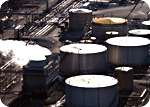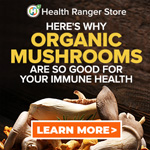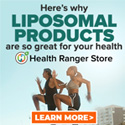
New Evidence Links Mercury Emissions to Rates of Autism
Tuesday, April 29, 2008 by: Teri Lee Gruss
Tags: mercury, autism, health news
- Newly released JFK files reveal Pentagon's role in creating Lyme disease and covid in the same lab
- Kiss Your Genetic Privacy Good-Bye! 23andMe Gets Green Light to Sell Your Intimate Genetic Details to Anyone They Want
- Woman contracts WORLD'S DEADLIEST VIRUS after unknowingly being given the WRONG VACCINE
- Sweden's migrant crisis deepens as failed green energy venture leaves thousands jobless, exposes systemic collapse
- AI weather model outperforms traditional forecasts, boosts accuracy by 20%
- Advisory: Ex-FBI agent exposes likely ATF honeypot operation selling illegal Glock switches
- The case for locking up the Deep State's biggest hatchet man...
- Revolutionize your diet with pomegranate: The miracle juice for gut health and metabolism
- Pediatric dentist exposes fluoride dangers as more states ban toxic water additive
- Could camel milk be a game-changer for autism? Science says it’s worth exploring
- North Carolina Supreme Court rules family can sue over COVID-19 force-vaccination of teen without parental consent
- Analysis: The coming economic collapse, a mass uprising and Trump's three secret weapons to halt the growing revolt
- DHS Secretary Kristi Noem plans to dismantle FEMA
- Can special diets and supplements help kids with autism? A new research offers hope and hints at what works
- Ann Vandersteel on the Health Ranger Report: Operation Burning Edge, the dollar empire’s collapse and the rebirth of America’s sovereignty
- Alex Epstein defends energy progress in his book “The Moral Case for Fossil Fuels”
- NIH to crack down on taxpayer-funded censorship: A victory for academic freedom
- Trump’s USDA policies drive egg prices down nearly 60%
- Newly released JFK files reveal Pentagon's role in creating Lyme disease and covid in the same lab
- Analysis: The coming economic collapse, a mass uprising and Trump's three secret weapons to halt the growing revolt
- Trump nominates VACCINE ZEALOT Susan Monarez to lead the CDC, sidelining RFK Jr.'s reform efforts
- Trump's greatest betrayal so far: Accelerating Middle East wars, silencing dissent, and serving Zionist masters
- CDC finally halts $11 billion COVID funding scam as health officials admit the ‘pandemic’ was a fraud
- The hidden dangers in your kitchen: How cooking methods impact diabetes, cancer and aging
- BEWARE: USDA allows genetically engineered vaccines to infiltrate organic food production
- Obama accused of laundering USAID funds to fuel global protest movements, regime change operations
- DEADLY DECEPTION: How COVID vaccines increased mortality rates and why authorities hid the truth
- Here are TEN all-natural ways to protect your garden without using harmful chemicals
- Dr. Mike Yeadon releases 15-minute testimony - WATCH - about genocidal intent of COVID “vaccines”
- Festive flavors: The sweet history, nutritional profile and health benefits of pecan pie
- Big Pharma's media takeover: How drug companies bought the news - and your health
- Dr. Suzanne Humphries makes bombshell appearance on Joe Rogan podcast, exposing vaccine industry deception back to POLIOMYELITIS
- Elon Musk: Aliens could be here on Earth RIGHT NOW
- 5 Simple steps to boost your brainpower: How to strengthen executive function in a distracted world
- Trump reverses course on Gaza plan, says “nobody is expelling Palestinians”
- California's social media censorship law struck down: A victory for free speech or a threat to online safety?
- Newly released JFK files reveal Pentagon's role in creating Lyme disease and covid in the same lab
- EPA advisor admits the agency is funneling billions to climate groups ahead of Trump’s return to White House
- California's social media censorship law struck down: A victory for free speech or a threat to online safety?
- Dr. Mike Yeadon releases 15-minute testimony - WATCH - about genocidal intent of COVID “vaccines”
- The Health Ranger releases “Vaccine Zombie” song and music video, using AI-animated zombies for the music video
- Florida takes a stand: DeSantis proposes permanent ban on mRNA vaccine mandates
- The pandemic as a tool for INDOCTRINATION: Understanding “The Indoctrinated Brain” by Dr. Michael Nehls
- “Why we influenced the 2020 elections”: Facebook files reveal the coordinated effort to bury the Hunter Biden laptop story
- Mike Adams releases country western hit single: Goin’ Back in Time is Comin’ Home
- Mike Adams releases music poetry sensation: A Child of God
- Unpacking the Lies That We’ve Been Fed – new song and music video released by Mike Adams, the Health Ranger
- Michigan sheriff announces criminal investigation into 2020 election crimes, Dominion Voting Systems
- Migrants are taking advantage of recent hurricanes to scam residents and loot their homes
- House Intelligence Committee calls for the ARREST and PROSECUTION of Dr. Anthony Fauci
- Rep. Nancy Mace introduces bill to ban biological males from female facilities on federal property
- Peter Rost exposes Big Pharma corruption in his book “The Whistleblower: Confessions of a Healthcare Hitman”
- Former horse rancher and 6,000 other plaintiffs are suing Syngenta after paraquat exposure led to Parkinson's Disease
- Mike Adams releases new song and music video: Nothing More Disgusting Than a Globalist
- Red Cross issues warning to stop blood plasma donations from vaccinated people
- Scientists confirm: GENIUS brain function can be spontaneously unleashed in humans without any apparent cause
- EPA advisor admits the agency is funneling billions to climate groups ahead of Trump’s return to White House
- HYSSOP: What research reveals about the health benefits of this ancient holy herb
- Two containers with completed ballots fall out of truck in Florida
- Fully vaccinated about to see “tsunami” of illness and death, warns virologist
- Global leaders unite to clamp down on “misinformation” with UN-backed Cascais Declaration
- BREAKING: 2025 NDAA authorizes mandatory military draft of WOMEN across America… as Pentagon pursues global NUCLEAR war with both Russia and China at the same time
- Michael Yon warns of a ZIONIST TAKEOVER in Trump’s second administration
- BOMBSHELL: DNA testing kits are a SCAM to develop ethnic-specific bioweapons
- Ozempic and Wegovy weight loss drugs are injectable LIZARD VENOM PEPTIDES that may unleash a devastating wave of organ failure… side effects align with symptoms of SNAKE BITES
- Israeli soldiers accused of even more torture and abuse in the West Bank
- These 13 countries just signed an agreement to engineer a global FAMINE by destroying food supply
- NASA admits that climate change occurs because of changes in Earth’s solar orbit, and NOT because of SUVs and fossil fuels
- RFK Jr. clears key hurdle: Sen. Susan Collins backs controversial HHS nominee, signaling a new era for health policy
- Sermon 30: How Jesus reveals Caesar’s FAKE CURRENCY and FALSE AUTHORITY
- Coriander seeds: Ancient medicine backed by modern science
- Arizona officials claim Maricopa County needs 10-13 days to tabulate results of the election
Lead researcher Raymond F. Palmer PhD says, "This is not a definitive study, but just one more that furthers the association between environment mercury and autism". The study, Proximity to point sources of environmental mercury release as a predictor of autism prevalence appears in the journal Health & Place (2008).
"We suspect low-dose exposures to various environmental toxicants, including mercury, that occur during critical windows of neural development among genetically susceptible children may increase the risk for developmental disorders such as autism".
Mercury sources evaluated in the UTHSC study included "coal-fired utility plants (33 percent of exposures), municipal/medical waste incinerators (29 percent) and commercial/industrial boilers (18 percent)". Concrete manufacturing was also listed as a source of mercury emissions.
Autism rates were gathered in 1,040 Texas school districts and distance from mercury sources were measured to a central point in the communities studied.
Researchers noted that children with autism not enrolled in the school districts studied were not included in the data. Therefore autism rates presented in this study may be somewhat under-reported.
Key findings from the UTHSC study news release
* For every 1,000 pounds of mercury released by all industrial sources in Texas into the environment in 1998, there was a corresponding 2.6 percent increase in autism rates in the Texas school districts in 2002.
* For every 1,000 pounds of mercury released by Texas power plants in 1998, there was a corresponding 3.7 percent increase in autism rates in Texas school districts in 2002.
* Autism prevalence diminished 1 percent to 2 percent for every 10 miles from the source.
Adding up the mercury body burden
Considering other sources of mercury exposure, from fish consumption, mercury amalgams and mercury preserved vaccinations along with the data from this revealing study, it isn't hard to see that the total body burden of mercury to pregnant and nursing mothers and young children is increasing at a potentially dangerous rate.
Dr. Palmer emphasizes that mercury pollution is a global issue. We know that coal burning power plants and industrial emissions travel in jet streams and ocean currents, redistributed across the planet and into distant food supplies. So how do we protect children, not only from mercury sources close to home but from global sources as well?
In 2007, the National Resources Defense Council (NRDC) reported that "China uses and releases more mercury than any other country in the world". The NRDC is working internationally, to find solutions to this problem including a reduction in global supply and demand for mercury and a strategy to control coal burning emissions in China. We can apply this same model domestically.
In their document "NRDC Finds to Stop Mercury Pollution in China: China is Cornerstone in Solving Global Mercury Problem", the authors say that China mined 1400 tons of mercury in 2004 for domestic use, about half of total global mercury used. Additionally, China imports mercury, much of it coming from the European Union which, according to the NRDC is the world's biggest exporter of mercury.
Reducing exposure to mercury, a potent neurotoxin, is integral to halting our exploding rate of autism. Eliminating the mercury preservative thimerosal in all vaccinations, eliminating consumption of mercury contaminated fish and seaweed and eliminating the use of mercury amalgams are effective steps towards reducing cumulative total body burden of mercury in pregnant and nursing mothers, small children and everyone else.
Reducing industrial mercury emissions is a challenge that has to be addressed both at home and abroad.
Source:
UTHSC News Release, April 24, 2008
Study links autism risk to distance from power plants, other mercury-releasing sources
(http://www.uthscsa.edu/hscnews/singleformat....)
Citation:
Palmer, R.F., et al., Proximity to point sources of environmental mercury release as a predictor of autism prevalence. Health & Place (2008), doi:10.1016/j.healthplace.2008.02.001.
National Resources Defense Council
(http://www.nrdc.org/international/china/merc...)
About the author
Teri Lee Gruss, MS Human NutritionMercury at FETCH.news
Get independent news alerts on natural cures, food lab tests, cannabis medicine, science, robotics, drones, privacy and more.
Take Action: Support Natural News by linking to this article from your website
Permalink to this article:
Embed article link: (copy HTML code below):
Reprinting this article:
Non-commercial use OK, cite NaturalNews.com with clickable link.
Follow Natural News on Facebook, Twitter, Google Plus, and Pinterest
Science News & Studies
Medicine News and Information
Food News & Studies
Health News & Studies
Herbs News & Information
Pollution News & Studies
Cancer News & Studies
Climate News & Studies
Survival News & Information
Gear News & Information
News covering technology, stocks, hackers, and more



"Big Tech and mainstream media are constantly trying to silence the independent voices that dare to bring you the truth about toxic food ingredients, dangerous medications and the failed, fraudulent science of the profit-driven medical establishment.
Email is one of the best ways to make sure you stay informed, without the censorship of the tech giants (Google, Apple, Facebook, Twitter, YouTube, etc.). Stay informed and you'll even likely learn information that may help save your own life."
–The Health Ranger, Mike Adams












































